Eric Hanselman is a longtime analyst at 451 Research, part of S&P Global Market Intelligence – and he also happens to be my neighbor. After running into him on countless walks while working from home recently, I decided to get his views on how tech companies can best work with industry analysts.
Michelle: From your perspective, what can an industry analyst firm do for tech startups and more established companies in the remaining half of 2020?
Eric: My personal perspective is that different firms provide different capabilities for their clients and companies need to understand those roles to make the most of their investments with them. The remainder of this year can be particularly valuable, as the urgency that drove the reactive actions of the first half has abated. This is a good time to recalibrate internal objectives and external messages.
As a startup CTO, I needed a more objective understanding of my market, a better understanding of how my customers would view me, and a perspective that would help my investors understand that I wasn’t crazy. This is a time to assess what’s changed and put efforts back into alignment and to gain new commitments from partners. As a CTO, I worked with three different analyst firms at different levels to achieve those goals during the previous economic downturn. No one can predict the future, but a good scenario planning exercise can identify possible outcomes. You’ll need data and review to build and validate those scenarios. Analyst firms can provide these.
More established companies can narrow the focus of their analyst interactions, as they tend to utilize analyst input for more specific tasks, like product definition and targeting. They also have a broader customer base to provide data and perspectives. Analyst firms can give them insight into what’s behind customer perspectives and ideas for future directions beyond what customers may be able to conceive.
 What are the best ways for a technology company to work with industry analysts if they are not currently able to engage a firm on a subscription basis?
What are the best ways for a technology company to work with industry analysts if they are not currently able to engage a firm on a subscription basis?
Having been a startup CTO, I’ve been through the travails of sorting out spending options and few can say that they’re able to spend freely. There will always be firms for whom you won’t be a client, but still want to engage. My strategies were to ensure that I was presenting information that fit the analyst’s coverage area (briefing too many analysts within a firm can be counterproductive) and that was likely to engage them. It’s important to be specific on why an interaction would be a valuable use of the analyst’s time. Leading with a customer use case is always interesting to me, as it can be a great proof point of delivered value.
Different firms have varying engagement models but expecting that you’ll have to do more than simply introduce the company, will get you much greater impact. Analysts want to be broadly informed about their markets and technologies and adding to their perspectives is valuable to them.
What should be included, in order of importance, on the first 6 slides of a company’s analyst presentation to make the most of meeting with analysts?
My preference is to get the value proposition right up front. It can be tempting to build context before getting to a punch line, but be brave enough to start where you mean to end. Yes, it might generate questions up front, but there should be enough established value to carry that message as you step back later in the presentation to provide more detail. Once that position has been established, you can tell the stories that make your case.
My order would go something like this:
- What’s the value that we deliver?
- Where do we stand in the market?
- Why are we credible?
- What are our stories?
What’s one thing you wish startups better understood about working with industry analyst firms, in general?
A key value for analyst firms is their ability to communicate information to their clients. To streamline this process, they have to frame that information in reference to what those clients already know. Comparisons are going to happen, and startups are well served by being ready for them. If you feel that your company is significantly different from others, clearly illustrate those differences. Understand that you’ll be arguing against a potential sea of others with similar claims.
Read Part II here: https://www.rainierco.com/pr-blog/a-qa-with-eric-hanselman-451-research-part-ii
___________________________________
Eric is the Chief Analyst at 451 Research, part of S&P Global Market Intelligence, and coordinates industry analysis across the broad portfolio of 451 research disciplines, with an extensive, hands-on understanding of a range of subject areas, including information security, networks, and semiconductors and their intersection in areas such as SDN/NFV, 5G, and cloud native computing. Eric helps 451 Research’s clients navigate these turbulent waters and capitalize on potential outcomes. He is a Certified Information Systems Security Professional (CISSP), a VMware Certified Professional (VCP), a member of 451’s Center of Excellence in Quantum Technologies and is a frequent speaker at leading industry conferences.







